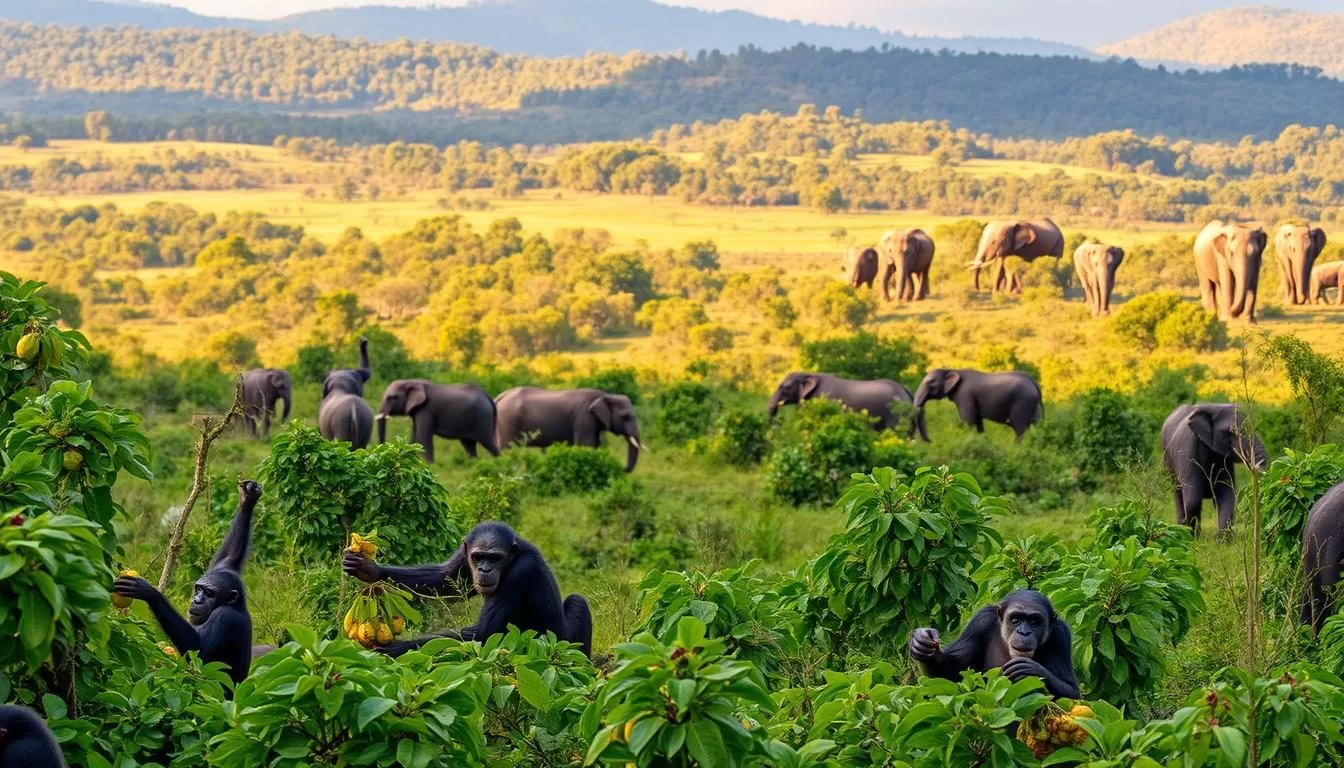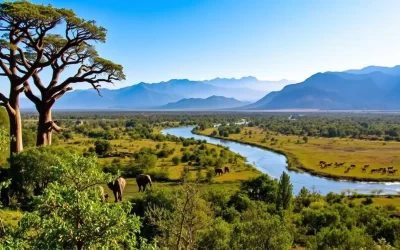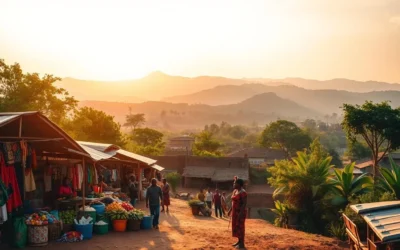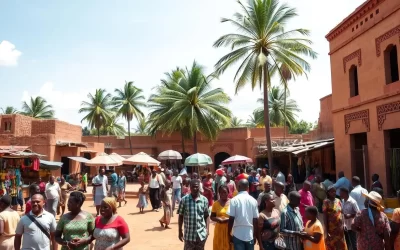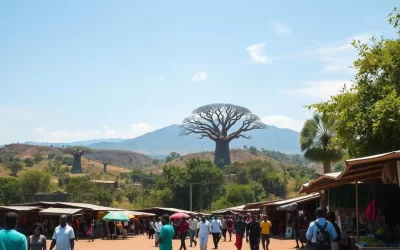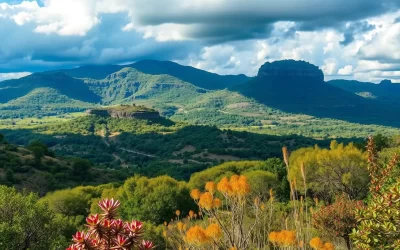✓ Accommodations✓ Flights✓ Rental Cars
Imagine exploring a vast nature reserve teeming with diverse wildlife, where African buffaloes, Kob antelopes, and baboons
roam freely. Welcome to Sarakawa, one ofWest Africa’shidden gems, a must-visit destination for nature enthusiasts and safari lovers.
Nestled in northern Togo, this national park is renowned for its accessibility, allowing visitors to encounter an array of animals without embarking on long-distance journeys. As you venture into the park, you’ll be treated to a rich tapestry of wildlife, including zebras and wildebeests that have migrated from other regions.
This comprehensive guide will walk you through the top attractions and activities in Sarakawa, from exhilarating wildlife safaris to serene birdwatching experiences. Get ready to immerse yourself in the natural beauty and cultural significance of this incredible destination.
Discovering Sarakawa Park: A Hidden Gem in Togo
Tucked away in northern Togo, Sarakawa Park is a treasure trove of natural wonders waiting to be explored. As a part of the West African region, this country‘s diverse landscapes are on full display, from savannas to stunning natural beauty.
The park is surrounded by hills and savanna landscapes, creating a diverse ecosystem that is home to a wide variety of wildlife. As a nature reserve, Sarakawa Park is a paradise for birdwatchers, with species such as blackbirds, sparrows, and francolins.
Sarakawa Park is a significant area within Togo’s tourism industry, offering visitors an authentic African safari experience. The park’s unique blend of landscapes and accessibility make it a standout place to visit. As a park, it represents the ecological diversity of northern Togo, making it a must-visit destination.
When to Visit Sarakawa Park for the Best Experience
The success of your Sarakawa Park adventure largely depends on the time of year you choose to visit. The best months to visit are from November to February, when the weather is pleasant, with temperatures ranging between 28-32°C.
This period coincides with the dry season, making it ideal for travel due to good road conditions and minimal rainfall. The dry conditions also enhance wildlife viewing opportunities as animals congregate around water sources and the less dense vegetation makes them easier to spot.
- The dry season, from November to February, offers the best conditions for visiting Sarakawa Park.
- Avoid visiting in March and April due to the extreme heat.
- The rainy season, from May to October, brings heavy rainfall that can make roads difficult to travel on.
- Different seasons affect wildlife behavior, influencing the animals you’re likely to see.

Understanding these seasonal variations helps you plan your trip accordingly, ensuring a more enjoyable and fulfilling experience at Sarakawa Park.
How to Get to Sarakawa Park from Lomé

To experience the beauty of Sarakawa Park, you’ll first need to navigate your way from Lomé, Togo’s vibrant capital city. The journey involves traveling approximately 200 kilometers north. You have several transportation options for this travel leg, including private car hire, public buses, or organized journey tours.
Private car hire offers flexibility and comfort, while public buses are a more economical option. Organized tours can provide a hassle-free experience, often including additional activities along the route. The city of Lomé is a great starting point, with various services available to facilitate your trip to Sarakawa Park.
Wildlife Safari Adventures in Sarakawa Park

In the heart of Togo, Sarakawa Park presents a unique safari experience, blending accessibility with an incredible concentration of wildlife. The park is home to a diverse range of animals, including African buffaloes, Kob antelopes, hartebeests, and baboons, with occasional sightings of zebras and wildebeests that have migrated from other regions.
Visitors can enjoy various safari options, including guided game drives and walking safaris, led by expert guides who share their knowledge of the ecosystem and track species. The best times for wildlife viewing are early morning and late afternoon, when animals are most active.
Sarakawa Park’s safari experience stands out from other national parks due to its authentic and less crowded nature, allowing for a more intimate connection with the wildlife. To maximize sightings, visitors are advised to be patient and stay quiet, keeping an eye out for the diverse species that inhabit the park.
Birdwatching Paradise: Spotting Rare Species
Birdwatchers will find Sarakawa Park to be a treasure trove, with its rich avifauna waiting to be explored. The park’s diverse landscapes, ranging from savannas to hills, support a wide variety of birds, making it an ideal destination for birdwatchers.
The park is home to numerous species, including blackbirds, sparrows, teals, francolins, wild guineafowls, ostriches, and emus. Each of these species has unique characteristics and behaviors, offering endless fascination for observers.
To make the most of your birdwatching experience, it’s recommended to bring binoculars, field guides, and cameras. The best viewing times are early morning and late afternoon when birds are most active.
| Bird Species | Habitat | Best Viewing Time |
|---|---|---|
| Blackbirds, Sparrows | Wooded areas | Early morning |
| Teals, Francolins | Wetlands | Late afternoon |
| Ostriches, Emus | Grasslands | Early morning |
Guided birdwatching tours can enhance your experience, providing insights into the habitats and behaviors of the birds. Whether you’re a novice or an experienced birdwatcher, Sarakawa Park is a must-visit destination.
Sarakawa Park, Togo: Best Things to Do – Top Picks
To make the most of your trip to Sarakawa Park, consider including these top activities in your itinerary. Sarakawa Park is known for its accessibility, allowing travelers to encounter many animals without long-distance journeys, making it one of the most tourist-friendly national parks in Togo.
Morning Game Drives
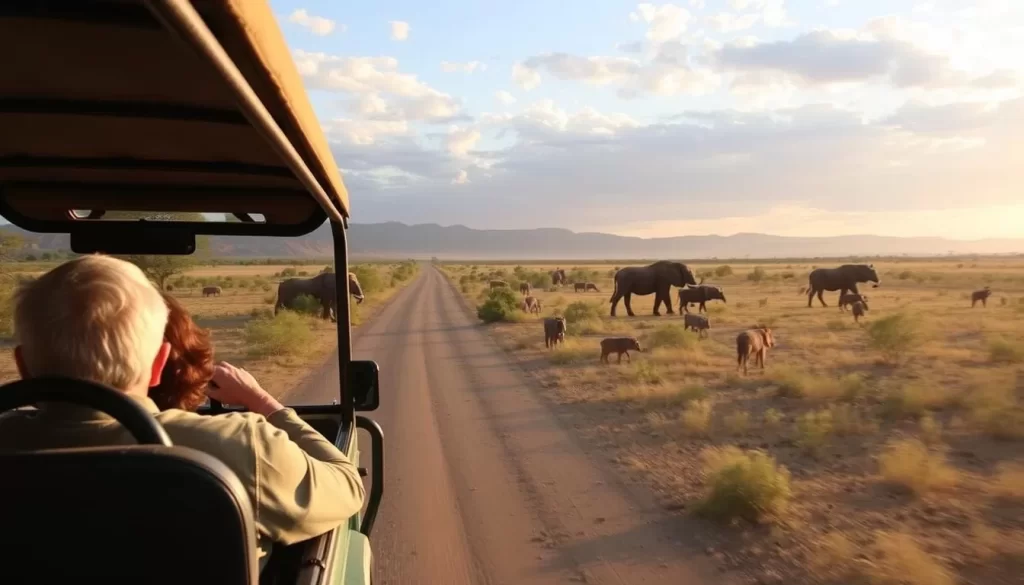
Morning game drives are an essential experience in Sarakawa Park. Early morning offers the best wildlife viewing opportunities as animals are most active during cooler temperatures.
Guided Nature Walks
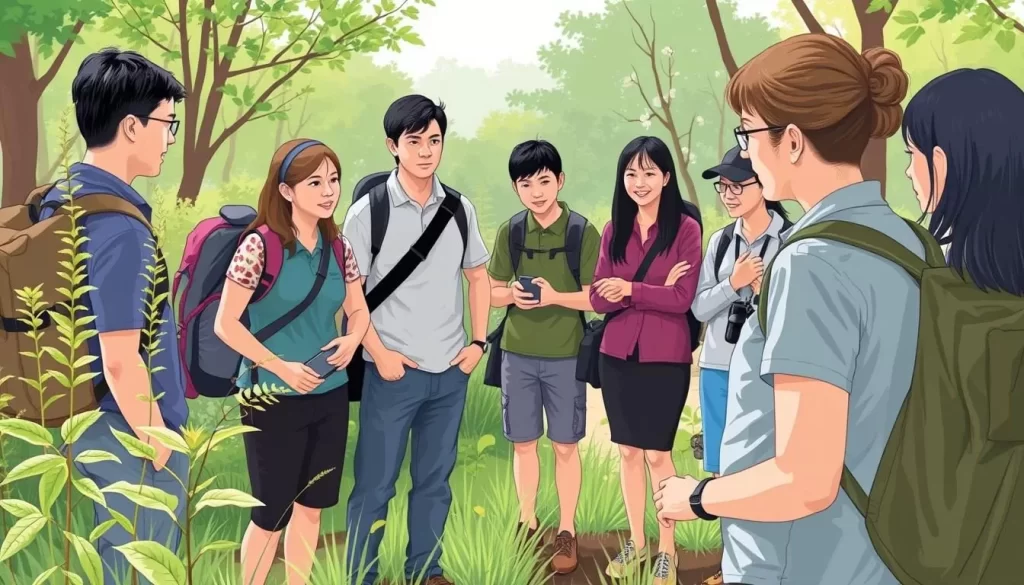
Guided nature walks provide a chance to get closer to smaller wildlife, learn about plant species, and experience the ecosystem from ground level. These walks can be customized for different interests and fitness levels.
Photography Expeditions
Photography expeditions in Sarakawa Park offer unique lighting conditions, diverse subjects, and special photography opportunities. These expeditions can be tailored to different interests and skill levels, providing a memorable experience.
Combining these top picks provides the most comprehensive visit to Sarakawa Park, offering different perspectives of the park. Practical information about booking these activities, including costs and duration, can be obtained from recommended operators or guides.
Encountering African Buffaloes in Their Natural Habitat
Encountering African buffaloes in their natural habitat is a highlight of any visit to Sarakawa Park. These animals are among the most impressive and potentially dangerous creatures you’ll encounter.
African buffaloes are known for their size, strength, and complex social structure. They inhabit various parts of the park, particularly areas with abundant grazing and water sources.
When observing buffaloes, maintain a safe distance and follow guide instructions to ensure a safe experience. Buffaloes play a crucial role in the savanna ecosystem, interacting with other wildlife and species.
| Characteristics | Behavior | Habitat |
|---|---|---|
| Large size, robust build | Social, often in herds | Grazing areas, near water sources |
| Powerful horns, protective nature | Can be aggressive when threatened | Varied terrain, including savannas |
For photographers, capturing buffaloes in their natural habitat requires patience and the right equipment. Consider using a telephoto lens and adjusting your settings for optimal results.
Spotting Zebras and Wildebeests: Migrants of Sarakawa
Among the diverse wildlife in Sarakawa Park, zebras and wildebeests stand out as remarkable migrants that have adapted to their new habitat. These fascinating species have traveled from other regions of Africa, enriching the park’s ecosystem.
Zebras and wildebeests are known for their distinctive appearances and behaviors. Zebras are easily recognizable by their black and white stripes, while wildebeests are notable for their large herds and annual migration patterns. Understanding these characteristics can enhance your viewing experience.
To spot these animals, head to the open savannas within the park, particularly during the early morning or late afternoon when they are most active. Observing from a safe distance, you can witness their natural behaviors and interactions with other native species. Tips for photography include capturing their distinctive patterns and movements, using a telephoto lens to get close-up shots without disturbing them.
The Baboon Troops of Sarakawa Park
One of the highlights of Sarakawa Park is the chance to witness the dynamic behavior of its baboon populations. The park is inhabited by various primates, including baboons, which are among the most visible and entertaining wildlife species. You can observe different baboon species, each with unique physical characteristics.
Baboon troops in Sarakawa are known for their complex social structures, including hierarchy and family units. They communicate through various methods, and you might witness behaviors like grooming, foraging, and playing. To best observe these animals, visit their preferred habitats during their daily routines.

When encountering baboons, maintain a safe distance and avoid feeding them. This ensures both your safety and the well-being of these incredible primates.
Antelope Varieties: Kob, Hartebeest and More
The park’s ecosystem supports a rich variety of antelopes, including Kob antelopes and hartebeests. As you explore Sarakawa Park, you’ll have the opportunity to observe these fascinating creatures in their natural habitat.
Kob antelopes, with their distinctive reddish-brown coats, are a common sight. They prefer open grasslands and are known for their impressive leaping ability. Hartebeests, on the other hand, are recognizable by their high withers and elongated faces, grazing in herds across the savanna.
Other species like bushbuck, duiker, and roan antelopes can also be spotted, each with unique characteristics. Antelopes play a crucial role in the ecosystem as prey animals, influencing predator populations and vegetation management. To spot them, look for their preferred habitats and activity patterns, and be patient.
Sarakawa Park is a haven for wildlife enthusiasts, offering a chance to see these incredible animals up close. Conservation efforts are in place to protect these species and their habitats, ensuring their survival for future generations.
Best Viewpoints for Panoramic Savanna Landscapes
As you explore Sarakawa Park, you’ll discover multiple viewpoints that showcase the beauty of the savanna. Surrounded by hills and savanna landscapes, the park is also a paradise for birdwatchers and nature enthusiasts alike.
The park offers several key viewpoints, each with its unique characteristics and accessibility. Some of the top viewpoints are easily accessible by vehicle, while others require a moderate hike.
| Viewpoint | Accessibility | Best Time to Visit |
|---|---|---|
| Hilltop View | Moderate hike, 2 km from main road | Early morning |
| Savanna Overlook | Easily accessible by vehicle | Late afternoon |
Photography Tips: For capturing expansive savanna views, use a wide-angle lens and shoot during the golden hour for optimal lighting.
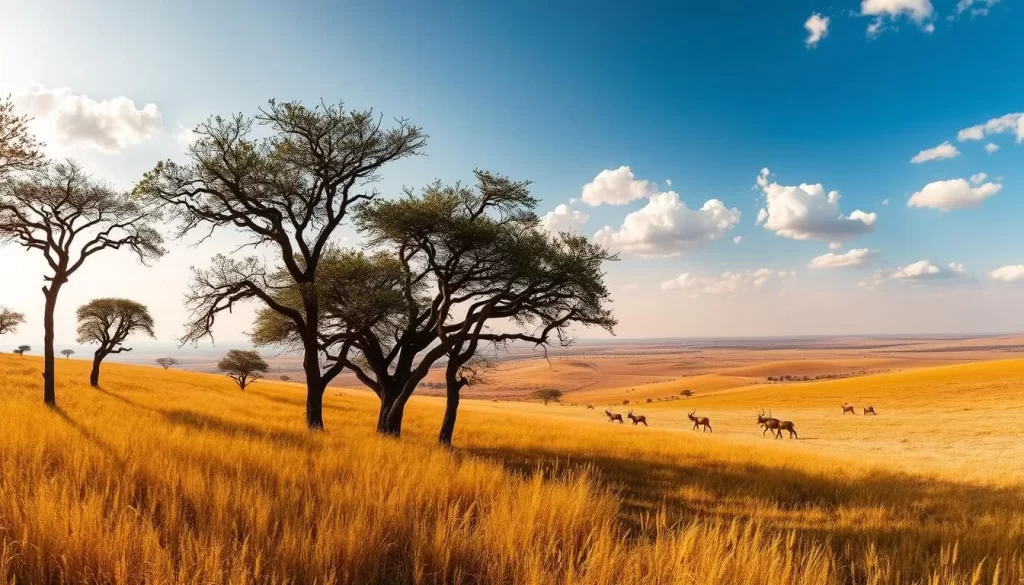
What to Pack for Your Sarakawa Park Adventure
Preparing for your Sarakawa Park adventure requires a thoughtful packing list to ensure a comfortable and enjoyable experience. The dry season, from November to February, is the best time to visit, with pleasant temperatures between 28-32°C.
Clothing Essentials for the savanna environment include lightweight, breathable fabrics, long sleeves for sun protection, and sturdy footwear for walking. You should also consider packing:
- Comfortable safari attire
- Warm layers for cooler mornings and evenings
- Rain gear (in case of unexpected showers)
Gear for Wildlife Viewing is also crucial. This includes binoculars for spotting distant animals, camera equipment with zoom lenses to capture those special moments, and field guides for identifying the diverse wildlife and bird species.
| Item | Description | Importance Level |
|---|---|---|
| Binoculars | For spotting wildlife from a distance | High |
| Camera with Zoom Lens | For capturing high-quality photos | High |
| Field Guides | For identifying animals and birds | Medium |
| Sunscreen and Sunglasses | For sun protection | High |
| Insect Repellent | For protection against insect bites | High |
Don’t forget Health and Safety Essentials like sun protection (hats, sunscreen, sunglasses), insect repellent, first aid supplies, and adequate water containers. Practical items such as dust covers for equipment, portable phone chargers, and comfortable daypacks can also enhance your safari experience.
Where to Stay Near Sarakawa Park
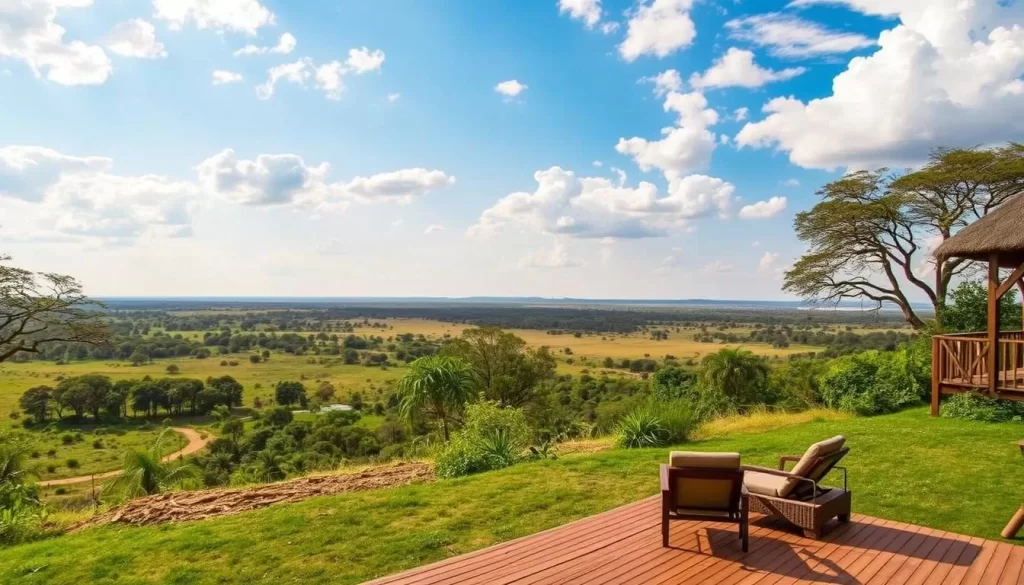
Finding the perfect place to stay near Sarakawa Park can enhance your wildlife adventure and overall travel experience. You have various accommodation options to choose from, ranging from budget-friendly lodges to luxury hotels.
The closest hotels and lodges to the park entrance offer the convenience of early morning and late afternoon wildlife viewing. For instance, some lodges provide guided tours and photography hides, catering specifically to wildlife enthusiasts.
Camping is another option for the more adventurous travelers, with facilities available within or near the park. You can also consider staying in nearby towns or villages, which offer a chance to experience local culture, albeit with longer travel times to the park.
It’s advisable to book your stay in advance, especially during peak seasons when availability is limited. Prices vary widely depending on the type of lodging and services offered, so planning ahead will help you secure the best options for your needs.
Comparing Sarakawa Park to Other Togo National Parks
When planning a trip to Togo, understanding the unique features of its national parks can greatly enhance your wildlife experience. Togo is home to several national parks, each offering distinct landscapes and wildlife viewing opportunities.
Sarakawa vs. Fazao-Malfakassa National Park
Sarakawa Park and Fazao-Malfakassa National Park differ significantly in their ecosystems. While Sarakawa is characterized by its savanna environment, Fazao-Malfakassa is covered in lush forests, hosting a diverse range of flora and fauna. This difference affects the wildlife viewing opportunities, with Sarakawa being ideal for spotting animals like zebras and wildebeests, and Fazao-Malfakassa offering chances to see buffaloes, elephants, and various primates.
Sarakawa vs. Fosse aux Lions National Park
Fosse aux Lions National Park, known for its elephant population, presents a different experience compared to Sarakawa. While Sarakawa offers a broader range of wildlife, Fosse aux Lions is a must-visit for elephant enthusiasts. The infrastructure and conservation approaches also vary between the two parks, with Fosse aux Lions being smaller but focused on protecting its elephant herd.
| National Park | Ecosystem | Notable Wildlife |
|---|---|---|
| Sarakawa Park | Savanna | Zebras, Wildebeests, Antelopes |
| Fazao-Malfakassa National Park | Forest | Buffaloes, Elephants, Primates |
| Fosse aux Lions National Park | Mixed | Elephants, Patas Monkeys, Warthogs |
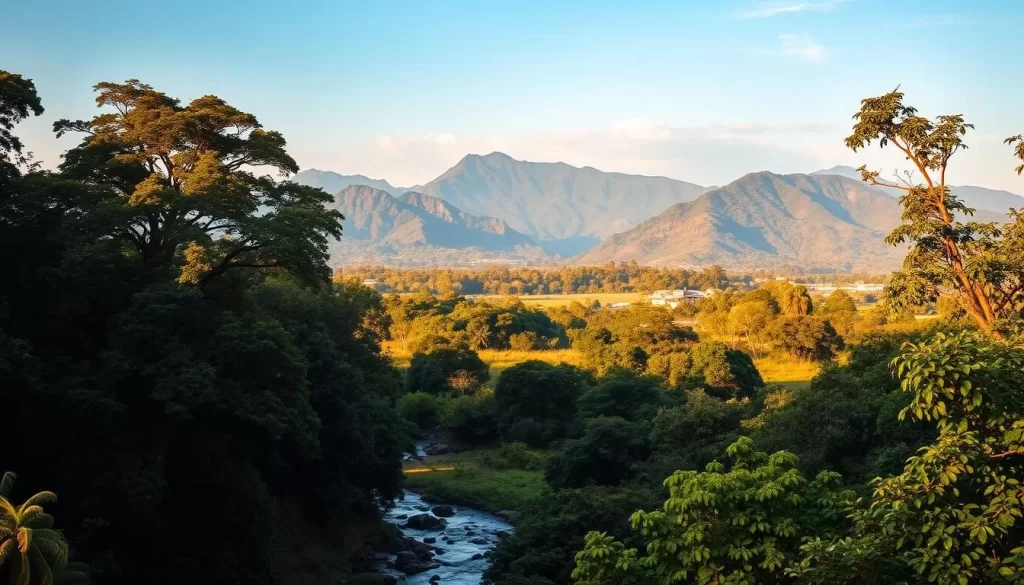
Safety Tips for Exploring Sarakawa Park
As you prepare to explore Sarakawa Park, a haven for wildlife enthusiasts, being aware of and adhering to specific safety tips is crucial. While the park is generally safe, nature demands respect.
To ensure a safe and enjoyable experience, follow wildlife safety protocols. Maintain a safe distance from animals, stay in your vehicle when required, and follow your guide’s instructions at all times.
Additionally, take health precautions by staying hydrated, protecting yourself against sun exposure, and preventing insect bites. Be mindful of your surroundings and secure your valuables.
| Safety Precautions | Description |
|---|---|
| Wildlife Safety | Maintain safe distance, stay in vehicle, follow guide |
| Health Precautions | Stay hydrated, protect against sun, prevent insect bites |
| Security | Be aware of surroundings, secure valuables |
Before visiting, check the latest travel requirements, including COVID-19 protocols and health documentation. By being informed and prepared, you can have a safe and memorable experience at Sarakawa Park.
Cultural Experiences Near Sarakawa Park
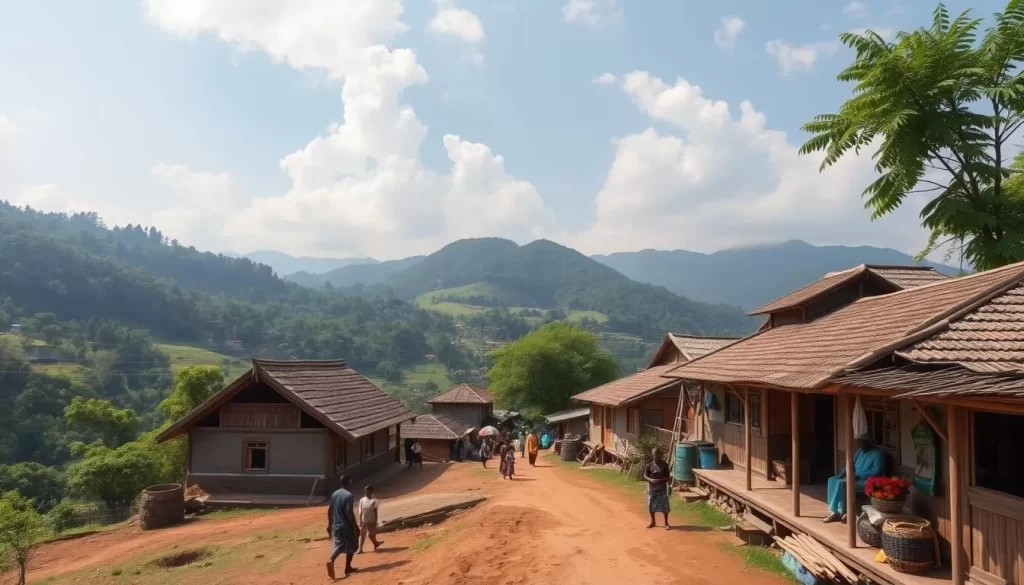
As you explore Sarakawa Park, you can also delve into the fascinating cultural experiences that surround it. The area is home to numerous villages where you can interact with the locals and learn about their customs, crafts, and daily activities.
You can experience the rich cultural heritage of the region through traditional music, dance, and storytelling performances. Additionally, local markets offer a wide range of authentic handicrafts, allowing you to support the local economy while acquiring unique souvenirs.
Understanding the history and traditional practices of the local communities provides a deeper appreciation of their interaction with the natural environment of Sarakawa Park. You can participate in cultural tours or homestay opportunities for a more immersive experience.
When engaging with local communities, it’s essential to be respectful. This includes being mindful of your behavior, respecting photography etiquette, and showing appreciation for the traditions and ways of life.
Conclusion
Sarakawa Park offers an unforgettable experience, blending wildlife, landscapes, and culture in one remarkable destination. As you plan your visit to Togo, this park stands out for its accessible wildlife viewing, diverse wildlife populations, and breathtaking savanna landscapes.
Your journey to Sarakawa Park will be filled with opportunities to spot rare bird species, witness the majesty of African buffaloes, and enjoy panoramic views. By choosing Sarakawa Park, you’re opting for an authentic African safari experience without the crowds.
To make the most of your trip, remember to pack essentials and choose from available accommodation options. By embracing responsible tourism practices, you’ll help preserve the park’s natural beauty and support local communities, creating lasting memories of your time in Togo.
Share your Sarakawa Park experiences or questions in the comments below, and let’s continue to explore the wonders of Togo together.
The above is subject to change.
Check back often to TRAVEL.COM for the latest travel tips and deals.
